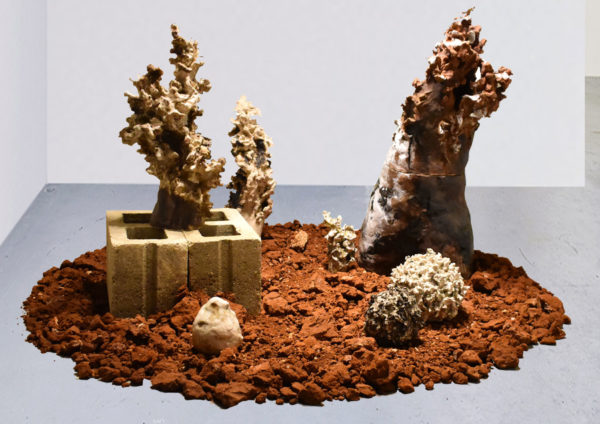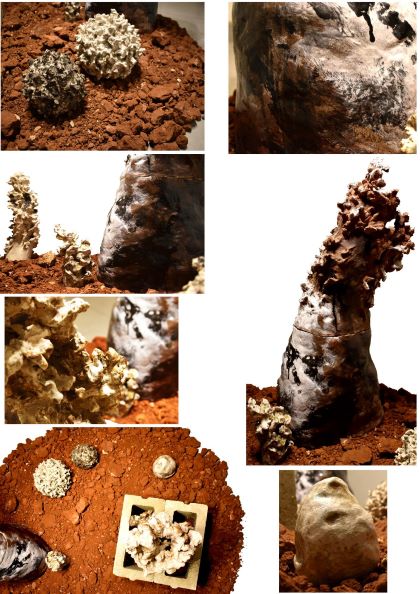Artist : Agius Victor
Images
Details
Height (cm): 140
Width (cm): 180
Depth (cm): 180
Weight (kg): 340
Material: Terrarossa, glazed stoneware ceramics, concrete bricks, documentation stills on screen with sound. 180x180x140cm The ceramics are made in stoneware clays which are highly grogged and with other infused local clays, oxide and other glazes, slips and also terrarossa. Some of the works are fired 2/3 times. The terrarossa earth is used for the floor assemblage. I am also using two concrete bricks and a slideshow of documentation images and found sounds in nature and other sites where earth is aggressively consumed. Ideally, the sounds will be available via headphones attached from a plasma screen on a wall. (I will be open and available for suggestions and other options from the direction, curators and staff of the Museum regarding this technical detail.
Technique: Stoneware glazed ceramics, earth, objet trouve, visual - sensory documentation
Year of completion: 2019
Edition
The work is an ensemble of six stoneware ceramic sculptures and concrete brick rising from terrarossa earth and red ochre soil. The rugged and organic forms allude to a primordial genesis while contrasting with the minimal and linear language of the concrete bricks. The work will also be accompanied by a slideshow of documentation stills with sound showing sites from the island from where I extract my materials. This works speaks of the way the islands I come from are being overbuilt with massive towers of apartments and offices while destroying the few areas left of our typical Mediterranean pastoral landscape. This is a reflection on how man is ritualistically consuming the earth. The earth and terrarossa with red ochre is a material which I use both in my earth paintings and ephemeral interventions and performances and sometimes also forms part of my applications of glazed/slips in my ceramics. This material which for me is sacred earth was also used for decorations and funerary rituals in the prehistoric temples of Ggantija and other numerous Unesco sites in Malta c. 3800 B.C. The terrarossa which forms an integral and pivotal part of the work was collected during my research from excavations at construction sites on the island of Gozo Malta.



